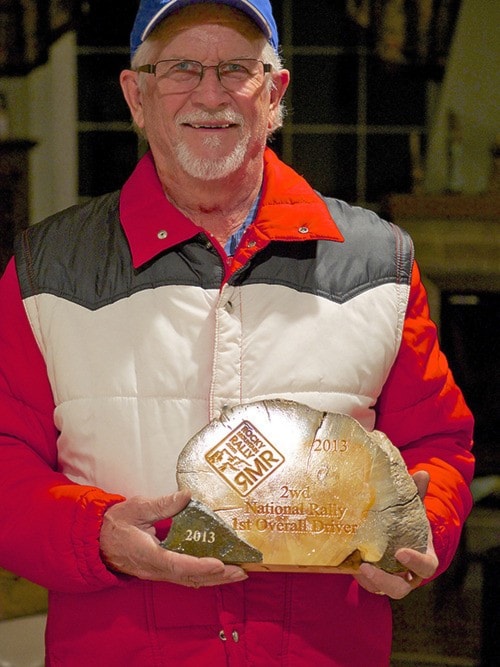His name was entered into the Canadian Autosport Hall of Fame in 2004… which should mean that Hope resident Taisto Heinonen is long past his glory days behind the wheel of a rally car.
But when the 73-year-old got an invitation to suit up for the Rocky Mountain Rally held in Invermere in early November, the competitive juices started flowing again.
This was no basic club rally — but a staged race for the Canadian and North American championship rally series. Serious stuff, with television coverage by TSN.
One problem: Heinonen didn’t have any wheels.
“For this race, you need a car with a roll cage, five-point harnesses, and removable steering wheel, etcetera,” said Heinonen on Tuesday. “I don’t have a car like that anymore.”
In the past few years, the native Finlander has been getting back into street rallies — called TSD or “Time, Speed, Distance” rallies — and a woman from Calgary, Leanne Junnila, has been his co-driver on a couple of events.
Junnila had some key connections for someone else’s car.
“Leanne’s friend knew Kevin Lee and his car, and he encouraged Kevin to let us use it,” said Heinonen. “These people are all members of the rally club in Calgary, which is big and active.”
Lee’s ride was a 1986 Toyota Corolla GT.
“Kevin said it was running about 140 horsepower,” said Heinonen. “A standard Corolla would be about 100 hp.
“The suspensions have to be stiffer, for rallying — and the inside is stripped down and there are extra lights for night driving.
“Rally cars have to be street legal because we run on public roads (transit sections) between the staged events,” he noted.
“As far as speed goes, this car didn’t have a speedometer, but top speeds were about 140-150 km/h. Remember these were really rough logging roads.”
During the races, the roads were blocked off and radio-controlled, said Heinonen.
In preparation for the staged events, teams are allowed to drive the course in a regular street car, on the day prior to the race. Speeds can be no more than 60 km/h.
“One route was 22 kilometres up a mountain, then back down again,” said Heinonen’s wife Phyllis, who went along to cheer on the team.
“You make notes for each turn,” explained Taisto. “Leanne was in the seat beside me and I would tell her what to write down. These are called pace notes.
“I might say ‘hair-pin left,’ or ‘fast right’ or ‘stay left, rock on right.’
“Leanne is one of the best co-drivers around. She only does that, she doesn’t drive, and I don’t co-drive. It’s teamwork,” said Heinonen.
“In the rally, the co-driver is reading out the notes through the intercom to the driver, talking all the time. It’s very important to be correct all the time because the driver has to totally trust the co-driver, to be able to drive maximum speed all the time.
“The smallest error could have terrible results.”
There are certainly elements of speed and danger but rallies have a different flavour than road races, said Phyllis.
“Cars are released one minute apart,” she said, “so you’re racing the clock, not the other cars. There’s a great feeling of camaraderie and community.”
Before the first race day, Nov. 1, Heinonen said he had a few factors gnawing at his confidence.
“This was my first pro rally in thirty-one years, so I was very nervous! I didn’t know how it would go and how I would do. The car was new to me and not very powerful. It was a challenge to drive something I had not prepared myself, and only sat in for the first time the night before the race.
“I told myself that I just wanted to finish the rally and not have big expectations about the results. The further into the rally I got, though, the more comfortable I was. I got used to the car and started going faster.”
Black ice is often a disaster for motorists — but Heinonen revels in it.
“Black ice takes more talent and experience to drive on, so that’s an advantage for me,” he said with a confident grin.
After 200 kilometres of racing on rough gravel over the two days, Heinonen and Junnila took the podium in the two-wheel-drive category, beating out 35 other teams.
There was no prize money for the win, though there was plenty of praise.
“Some people said rally driving is like learning to ride a bike – so even older drivers with experience still have the muscle memory to do it,” said Heinonen. “It did seem like that for me.”
